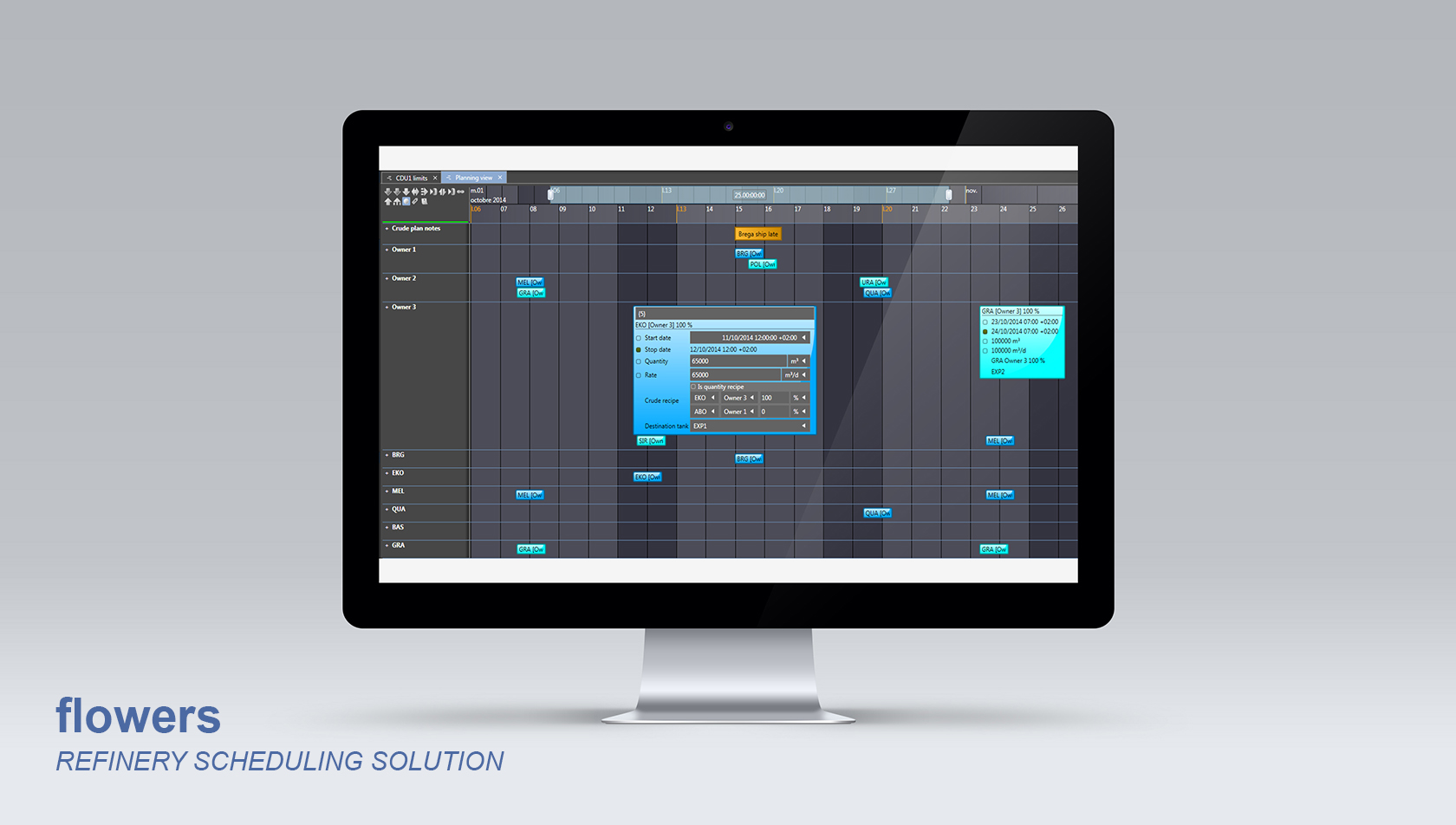With Flowers, head towards eco-responsible management of your industrial activity

Reduce your environmental footprint and save energy thanks to the Flowers platform
Mathematical programming is a powerful tool for eco-responsible management, helping businesses minimize their environmental footprint, optimize resource usage and achieve their sustainability goals.

Optimization of energy consumption
The platform enables energy intensive processes to determine the optimal combination of different energy sources, taking into account costs, production capacities and greenhouse gas emissions.
Eco-responsible operations
The planning module can be used to identify the optimal combination of raw materials and inputs and manufacturing processes to minimize the environmental footprint of products while maintaining quality and costs.
Eco-responsible investments
In a context of investment choices in new processes or development of new products, the two primal (constraints) and dual (sub-objectives) approaches can effectively inform decision-makers to make economically sound and ecologically responsible choices. .

Underlying principles of linear programming in eco-responsible management:
- Taking into account emission constraints: specific constraints can be integrated, to take into account environmental regulations, whether in terms of emissions or pollutant content in finished products.
- Multiobjective optimization: the flowers platform also allows multiobjective optimization. In this approach, an emissions constraint can be used as a secondary objective (or sub-objective) which must be minimized, subject to the constraint of limited degradation of the economic objective.
Marginal analysis and eco-responsible management:
- Environmental cost analysis: in multiobjective modeling, marginal costs make it possible to determine the impact of variations in operational decisions on environmental costs and benefits. This analysis helps companies identify potential savings and optimize their environmental performance.
- Resource management: marginal cost analysis helps understand the impact of variations in resource use on environmental impact. This understanding helps the company efficiently allocate its resources to minimize their environmental footprint.
- Marginal rate of substitution: this quantity which can be deduced from the optimal solution represents the emissions impact of the production of an additional unit of a given product
“Life cycle” approach:
Taking into account the environmental impact of operations or investments can be done according to different more or less broad scopes:
- Limited to internal operations at the factory.
- Taking into account upstream and downstream logistics (impact on the transport of materials raw and finished products).
- Taking into account the entire life cycle of products, from the extraction or manufacturing of inputs to the final consumption of the products, including the manufacturing of the latter.
These 3 Approaches are possible in our platform, either by direct consideration (for the first 2) or implicitly, by allocating to inputs and products sold their respective footprints within the factory’s emission constraints.